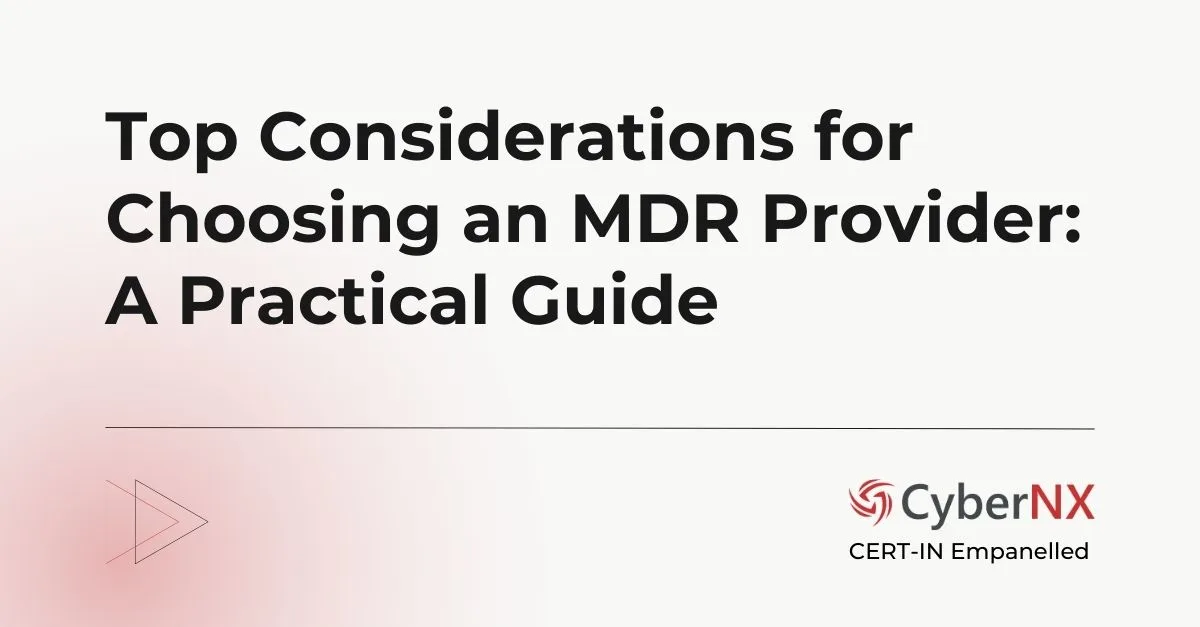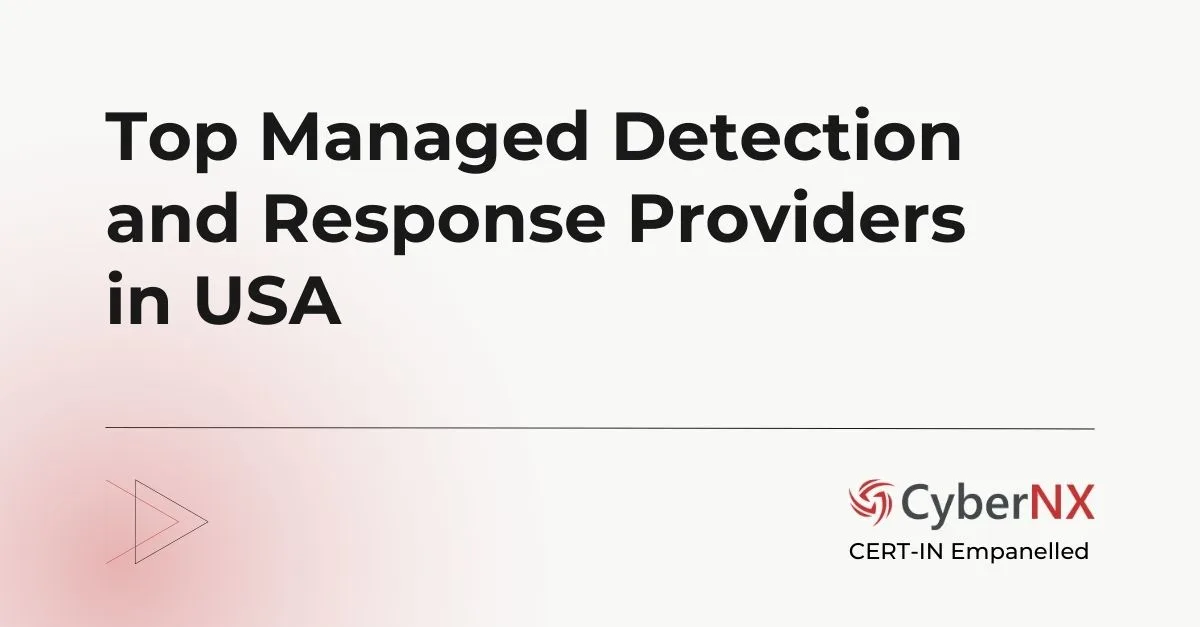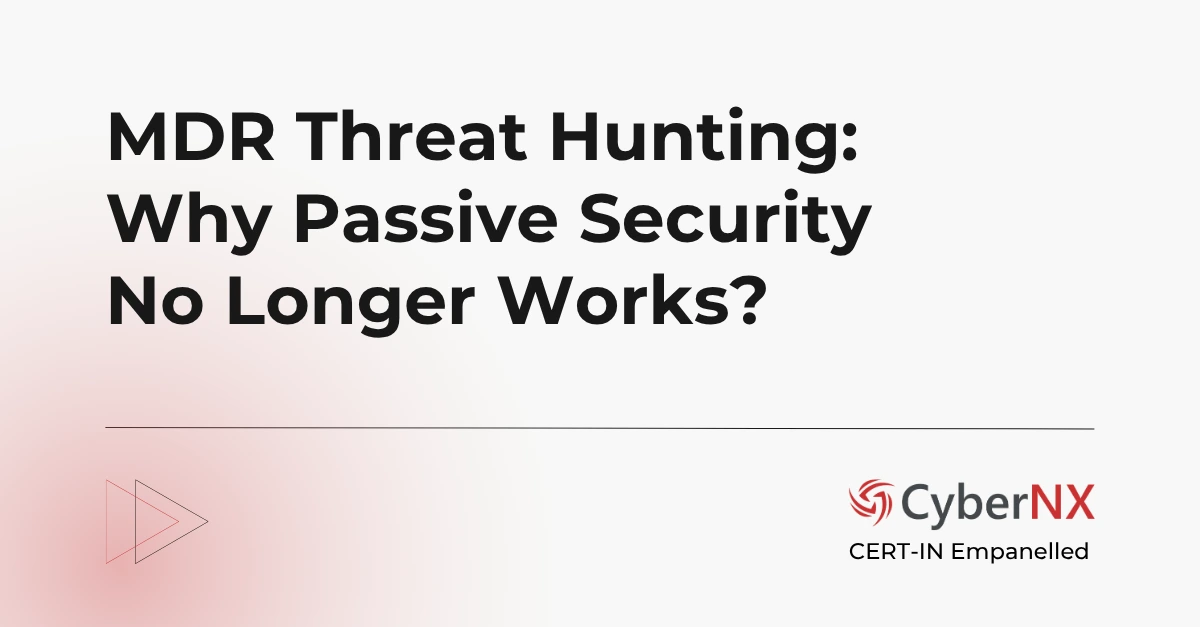Picture this: five minutes into the weekly security risk meetings and the conversation often drifts toward alert volumes, missed escalations and perhaps the need for more analysts. Isn’t that the reality for many security teams safeguarding businesses?
Then someone might ask the only question that matters: What would it take to make incident response faster and smarted with AI? A security elevation where the right action happens at the right time with documented reasoning and minimal drama.
That’s the promise leaders are testing right now with agentic AI in MDR. And a disciplined shift from monitoring to measurable risk reduction is the way ahead.
What is Agentic AI in MDR?
At its core, agentic AI in MDR is about embedding autonomous, goal-driven software agents into the Managed Detection and Response (MDR) process. These agents do not just analyse data or suggest next steps, they actively pursue objectives within guardrails you define.
Instead of being reactive tools, agentic systems observe, decide and act across the detection-and-response loop. For example, an agent can detect suspicious lateral movement, trigger an endpoint isolation, revoke a compromised identity token and then log every step in a decision journal. All this without waiting for human intervention.
The key distinction is intent: agentic AI is not passively predicting outcomes but actively working toward defined goals such as contain ransomware within 60 seconds or block exfiltration attempts in real time. Humans remain in charge, but machines take on execution, reasoning and continuous improvement.
Benefits of Agentic AI for Business
Why should CISOs, CTOs and CEOs care about this shift? Because agentic AI in MDR translates directly into business outcomes that matter to the boardroom.
1. Radical Speed in Response
Containment that once took hours can now happen in seconds. Faster isolation means reduced blast radius and minimized downtime.
2. Sharper Analyst Productivity
By offloading repetitive tasks, analysts can focus on high-value investigations and strategic defence improvements, not chasing endless alerts.
3. Auditable Compliance Decisions
Every action is logged with machine-generated reasoning, creating transparent, regulator-ready audit trails.
4. Scalable Defence Without Scaling Headcount
Businesses can expand defences without linear increases in security staff—a critical advantage amid ongoing talent shortages.
5. Stronger Risk Posture for the Enterprise
Agentic AI enforces consistency and reduces human error, strengthening both operational resilience and executive confidence.
When combined, these benefits make agentic AI in MDR less about hype and more about measurable business value.
From Monitoring to Outcomes: The New Shape of MDR
Think of agentic AI in MDR as a composable security workforce that never tires, writes its own decision logs, and operates with transparent constraints. With agentic AI, the center of gravity moves from “What did the SIEM say?” to “Which risk was reduced, by how much, and how fast?”
This transformation pushes MDR from a service that reacts to alerts toward a system that continuously reduces exposure and proves it with data executives can trust.
Measuring What Matters: Metrics for Executives
CISOs and CEOs don’t benchmark success by the number of alerts cleared; they want evidence that risks are shrinking, and teams are operating at scale. With agentic AI in MDR, performance should be measured against outcomes, not activity.
| METRIC | WHAT IT REVEALS |
| Mean Time to Defence (MTTD) | How quickly the first effective control (e.g., endpoint isolation, token revocation) is applied after detection. |
| Containment Coverage | The percentage of priority threats neutralized automatically within approved policy boundaries. |
| Analyst Leverage | The uplift in high-value cases or investigations each analyst can handle after offloading repetitive tasks. |
| Decision Auditability | The proportion of AI-driven responses that include rationale, evidence, and compliance-ready logs. |
| Playbook Refresh Rate | How fast automated response rules adapt to new attack patterns before becoming outdated. |
Together, these KPIs give executives a clear lens on whether agentic AI in MDR is reducing exposure, scaling human talent, and producing defensible results.
Agentic AI in MDR: Principles of Safe Adoption
The leap to autonomous decision-making need not be blind. Executives need to know that automation won’t run unchecked but will operate within clear boundaries. These principles form the foundation of safe adoption:
- Policy-Bound Playbooks: Each automated action must live inside a pre-approved framework with conditions, guardrails, and a rollback path.
- Specialized Agents: Build narrow, purpose-driven agents for triage, investigation, or containment instead of one generalist agent prone to error.
- Shadow Mode Pilots: Test agent recommendations in observation-only mode before allowing execution in live environments.
- Transparent Decision Logs: Require every AI-driven action to come with a clear explanation, confidence score, and evidence record.
- Built-In Safety Valves: Introduce limits, kill switches, and automated reversals to minimize unintended consequences.
Handled this way, agentic AI in MDR shifts from experimental technology to dependable operational muscle.
Addressing AI Risks and Challenges
Every innovation introduces new risks – but inaction leaves organizations just as exposed. The transition to agentic AI in MDR demands thoughtful risk handling across four fronts:
- Model Reliability: Guard against errors and hallucinations by layering deterministic tools, confidence thresholds, and strict policy checks.
- Integration Stability: Prevent tool sprawl and brittle connections by orchestrating agents through standardized APIs instead of direct product ties.
- Governance and Change Management: Document which actions are permitted, where autonomy is applied, and how escalation works via an autonomy register.
- Privacy and Compliance Readiness: Limit the scope of data exposed to AI, anonymize sensitive information, and ensure all access and actions are logged by default.
The trade-off is clear: organizations that lean into agentic AI in MDR responsibly can cut incident impact dramatically, while those that hesitate risk staying stuck with slow, manual defences.
Conclusion
This isn’t about replacing analysts; it’s about removing the latency between knowing and doing. With agentic AI in MDR, security teams can shorten containment windows, create transparent decision trails, and scale defences without scaling headcount.
The technology is not a future bet; it’s a present lever. Done right, it turns MDR from an endless cycle of alerts into a system that executives can measure, trust, and defend in the boardroom.
Contact us today to understand in-depth about agentic AI in MDR and how it can transform your security preparedness against modern attacks.
Agentic AI in MDR FAQs
How does agentic AI in MDR differ from traditional automation in SOCs?
Agentic AI is goal-driven, capable of reasoning and adapting to outcomes, whereas traditional automation executes static playbooks without contextual awareness or self-improvement.
Can agentic AI in MDR integrate with legacy security tools?
Yes. By using API gateways and orchestration layers, agentic AI can work alongside legacy SIEMs, firewalls, and endpoint tools, extending their usefulness without costly rip-and-replace upgrades.
What governance model is recommended for deploying agentic AI in MDR?
Organizations should establish an autonomy register – a clear document outlining where AI has decision rights, guardrails, escalation paths, and rollback protocols.
How should businesses measure ROI on agentic AI in MDR?
ROI should be tracked through reduced incident impact (MTTD), analyst efficiency gains, cost avoidance from breaches, and demonstrable compliance readiness.






